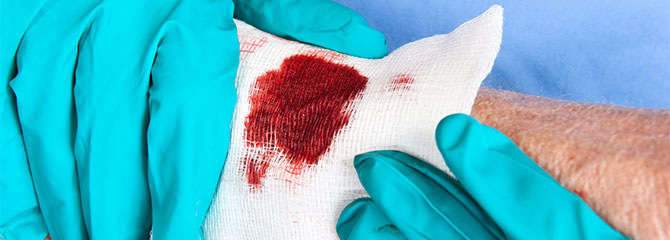Common Bleeding Disorders and Signs in Women

Bleeding disorders don’t just affect men. Several bleeding disorders affect women, too. The most common inherited bleeding disorder in females is von Willebrand disease (VWD). Although its exact incidence is unknown, estimates of VWD range from about 1 out of every 100 to 10,000 people. (VWD affects an equal number of men and women.) Women and girls can also have the most common types of hemophilia—hemophilia A (factor VIII [8] deficiency) or hemophilia B (factor IX [9] deficiency)—both of which are hereditary. Some women who are symptomatic carriers of hemophilia also have symptoms of the bleeding disorder. Further, women can have a rare platelet disorder or any of the rare factor deficiency disorders, such as factor I (1), II (2), VI (6), VII (7), XI (11), and XIII (13) deficiency.
If you have symptoms of a bleeding disorder, it’s important to get a proper diagnosis and treatment from a hematologist. In the United States, the network of Hemophilia Treatment Centers (HTCs) provides comprehensive care to patients with hemophilia and other bleeding disorders. HANDI, the National Hemophilia Foundation’s information resource center, can provide information on bleeding disorders and location of the nearest HTC. Contact HANDI at [email protected] or 800.42.HANDI (800.424.2634).
**Better You Know: A New Resource from NHF
If you have symptoms of a bleeding disorder, your life can be better if you know. Better if you seek care. Better if you get treatment. Find out if you are at risk, and take the first step in feeling better. Visit https://betteryouknow.org/.
For more information on bleeding disorders, go to Types of Bleeding Disorders.
For a Hemophilia Treatment Center near you, got to Quick Finder.
Common Signs of Bleeding Disorders in Women
Here are some signs that may indicate a bleeding disorder in women:
- Heavy menstrual bleeding, called menorrhagia, which is characterized by:
- Bleeding for longer than 7 days, from the time it begins until the time it ends
- Flooding or gushing blood that limits daily activities, such as social activities, school, or exercise
- Passing blood clots that are bigger than a quarter
- Changing a tampon and/or pad every 1 hour or less on the heaviest day
- Low levels of iron in the blood; having had or having been treated for anemia
- A family member has or has had a bleeding disorder, such as von Willebrand disease (VWD) or hemophilia
- Heavy bleeding from dental surgery or other surgery, and/or other bleeding symptoms, such as:
- A nosebleed that occurs for no apparent reason and lasts longer than 10 minutes despite pressure on the nose, or a nosebleed that needs medical attention
- An episode of bleeding from a small wound that lasts more than 15 minutes
- Bleeding that starts up again within the first seven days following surgery
- An episode of bruising with little or no apparent trauma, especially if a lump is under the bruise
- An episode of blood in the stool for no apparent reason
- A history of muscle or joint bleeding
Heavy Menstrual Bleeding: A Common Sign of a Bleeding Disorder
One of the most common signs of a bleeding disorder in women is heavy menstrual bleeding, called menorrhagia. Indeed, in adolescent girls, menorrhagia is often the first and main sign of von Willebrand disease. Because heavy menstrual bleeding can also be a sign of other gynecologic and hormonal disorders, a complete gynecologic examination is important.
Gynecologists and family practitioners may, however, be unfamiliar with the signs and symptoms of bleeding disorders and attribute heavy periods to other causes. In addition, women with a family history of a bleeding disorder may think their periods are normal because their menstrual bleeding is similar to that of other female family members. As a result, they may not mention it to their health care provider.
For more information, go to von Willebrand disease.
